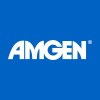
Treating Paroxysmal Nocturnal Haemoglobinuria Patients With rVA576
Paroxysmal Nocturnal Hemoglobinuria (PNH)rVA576 for patients with Paroxysmal Nocturnal Hemoglobinuria (PNH).

Study of Efficacy and Safety of Twice Daily Oral LNP023 in Adult PNH Patients With Residual Anemia...
Paroxysmal Nocturnal Hemoglobinuria (PNH)The purpose of this Phase 3 study is to determine whether LNP023 is efficacious and safe for the treatment in PNH through demonstration of superiority of LNP023 compared to anti-C5 antibody treatment in adult PNH patients presenting with residual anemia despite treatment with anti-C5 therapy

Reduced Intensity Allogeneic PBSCT to Treat Hematologic Malignancies and Hematopoietic Failure States...
Hematologic NeoplasmsMultiple Myeloma5 moreThe purpose of this study is to look at whether the combination of lower-dose chemotherapy with two chemotherapy (anti-cancer) drugs, called busulfan and melphalan, and an antibody medication called alemtuzumab (Campath®), can prevent rejection of donor blood stem cells so that those cells take hold and build a healthy new blood cell factory after transplant. The study will also look at the safety of the combination of drugs and of the transplant of peripheral blood stem cells from a healthy relative or an unrelated donor.

Haploidentical Stem Cell Transplant for Treatment Refractory Hematological Malignancies
Acute Lymphoblastic Leukemia (ALL)Acute Myeloid Leukemia (AML)9 moreRelapsed disease is the most common cause of death in children with hematological malignancies. Patients who fail high-intensity conventional chemotherapeutic regimens or relapse after stem cell transplantation have a poor prognosis. Toxicity from multiple therapies and elevated leukemic/tumor burden usually make these patients ineligible for the aggressive chemotherapy regimens required for conventional stem cell transplantation. Alternative options are needed. One type of treatment being explored is called haploidentical transplant. Conventional blood or bone marrow stem cell transplant involves destroying the patient's diseased marrow with radiation or chemotherapy. Healthy marrow from a donor is then infused into the patient where it migrates to the bone marrow space to begin generating new blood cells. The best type of donor is a sibling or unrelated donor with an identical immune system (HLA "match"). However, most patients do not have a matched sibling available and/or are unable to identify an acceptable unrelated donor through the registries in a timely manner. In addition, the aggressive treatment required to prepare the body for these types of transplants can be too toxic for these highly pretreated patients. Therefore doctors are investigating haploidentical transplant using stem cells from HLA partially matched family member donors. Although haploidentical transplant has proven curative in many patients, this procedure has been hindered by significant complications, primarily regimen-related toxicity including graft versus host disease (GVHD), and infection due to delayed immune reconstitution. These can, in part, be due to certain white blood cells in the graft called T cells. GVHD happens when the donor T cells recognize the patient's (the host) body tissues are different and attack these cells. Although too many T cells increase the possibility of GVHD, too few may cause the recipient's immune system to reconstitute slowly or the graft to fail to grow, leaving the patient at high-risk for infection. However, the presence of T cells in the graft may offer a positive effect called graft versus malignancy or GVM. With GVM, the donor T cells recognize the patient's malignant cells as diseased and, in turn, attack these diseased cells. For these reasons, a primary focus for researchers is to engineer the graft to provide a T cell depleted product to reduce the risk of GVHD, yet provide a sufficient number of cells to facilitate immune reconstitution, graft integrity and GVM. In this study, patients were given a haploidentical graft engineered to with specific T cell parameter values using the CliniMACS system. A reduced intensity, preparative regimen was used to reduce regimen-related toxicity and mortality. The primary goal of this study is to evaluate overall survival in those who receive this study treatment.

Allogeneic Mixed Chimerism Stem Cell Transplant Using Campath for Hemoglobinopathies & Bone Marrow...
Sickle Cell AnemiaSevere Aplastic Anemia2 moreRATIONALE: Although used primarily to treat malignant disorders of the blood, allogeneic stem cell transplantation can also cure a variety of non-cancerous, inherited or acquired disorders of the blood. Unfortunately, the conventional approach to allogeneic stem cell transplantation is a risky procedure. For some non-cancerous conditions, the risks of this procedure outweigh the potential benefits. This protocol is designed to test a new approach to allogeneic stem cell transplantation. It is hoped that this approach will be better suited for patients with non-cancerous blood and bone marrow disorders.

Study of Danicopan in Participants With Paroxysmal Nocturnal Hemoglobinuria (PNH)
Paroxysmal Nocturnal Hemoglobinuria (PNH)The purpose of this study was to determine the safety and efficacy of ACH-0144471 (also known as danicopan and ALXN2040) in currently untreated participants with PNH.

ALXN1210 Versus Eculizumab in Adult Participants With Paroxysmal Nocturnal Hemoglobinuria (PNH)...
Paroxysmal Nocturnal Hemoglobinuria (PNH)The primary purpose of this study was to assess the noninferiority of ravulizumab compared to eculizumab in adult participants with PNH who were clinically stable after having been treated with eculizumab for at least 6 months.

A Study Evaluating the Efficacy and Safety of ABP 959 Compared With Eculizumab in Adult Participants...
Paroxysmal Nocturnal HemoglobinuriaThis is a randomized, double-blind, active-controlled phase 3 study of ABP 959 in participants with paroxysmal nocturnal hemoglobinuria.

A Long-Term Treatment Study of ACH-0144471 in Participants With Paroxysmal Nocturnal Hemoglobinuria...
Paroxysmal Nocturnal HemoglobinuriaThe purpose of this study is to evaluate the long-term safety and efficacy of ACH-0144471 in participants with paroxysmal nocturnal hemoglobinuria (PNH) who have demonstrated clinical benefit from ACH-0144471 in Study ACH471-100. This study is designed to include up to 12 participants.

Efficacy and Safety of Elizaria® vs. Soliris® in Patients With PNH
Paroxysmal Nocturnal HemoglobinuriaMarchiafava-Micheli Syndrome1 moreIt is a multicenter, open-label, randomized, parallel-group study of the efficacy and safety of Elizaria® (eculizumab, GENERIUM JSC, Russia) versus Soliris® (Alexion Pharma GmbH, Switzerland) in patients with paroxysmal nocturnal hemoglobinuria.
